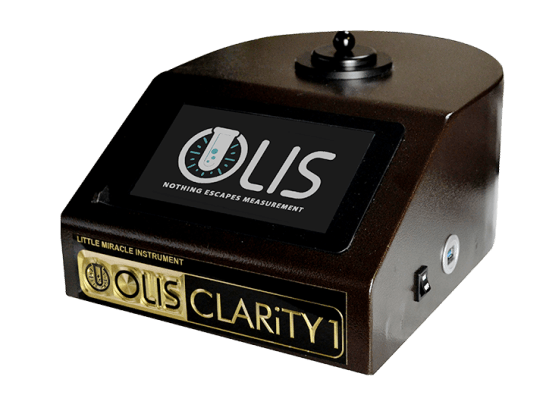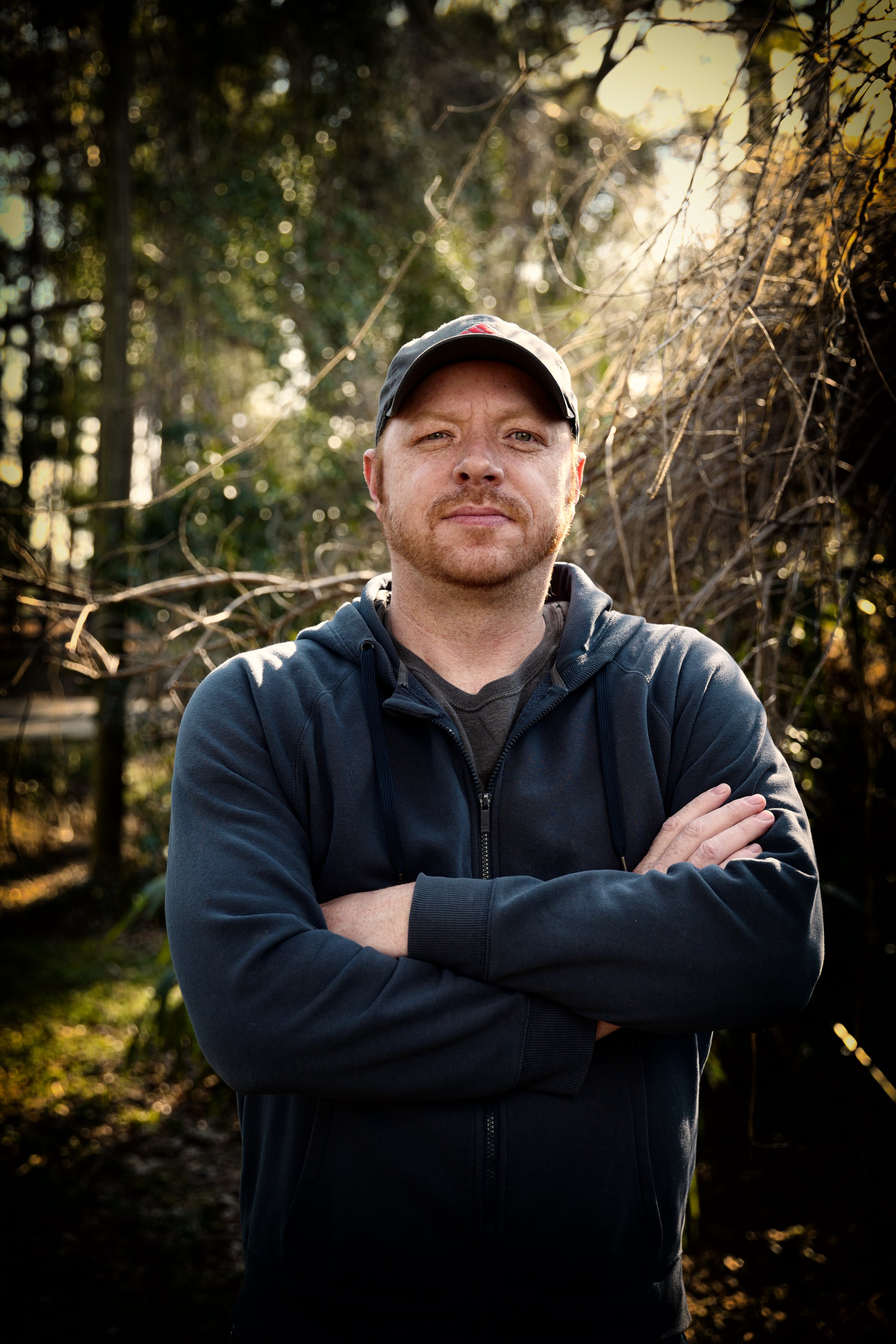Our Uv/vis Ideas
Our Uv/vis Ideas
Blog Article
A Biased View of Spectrophotometers
Table of ContentsHow Spectrophotometers can Save You Time, Stress, and Money.All about Circularly Polarized LuminescenceAll about Uv/visNot known Incorrect Statements About Circular Dichroism Getting The Spectrophotometers To Work5 Simple Techniques For Circular DichroismSome Known Factual Statements About Circular Dichroism Not known Details About Uv/vis The Best Strategy To Use For Circularly Polarized LuminescenceUv/vis/nir - An OverviewGetting The Spectrophotometers To WorkUv/vis Can Be Fun For EveryoneUv/vis/nir - The Facts
It is then scanned through the sample and the referral solutions. Portions of the incident wavelengths are transferred through, or reflected from, the sample and the referral. Electronic circuits convert the relative currents into direct transmission portions and/or absorbance/concentration values.The transmission of a referral substance is set as a baseline (information) value, so the transmission of all other substances are taped relative to the initial "zeroed" compound. The spectrophotometer then transforms the transmission ratio into 'absorbency', the concentration of specific components of the test sample relative to the preliminary compound.
Because samples in these applications are not easily offered in large quantities, they are specifically suited to being evaluated in this non-destructive strategy. In addition, precious sample can be conserved by utilizing a micro-volume platform where as low as 1u, L of sample is needed for total analyses. A short description of the procedure of spectrophotometry includes comparing the absorbency of a blank sample that does not consist of a colored compound to a sample that consists of a colored substance.
The 6-Second Trick For Uv/vis
In biochemical experiments, a chemical and/or physical property is selected and the treatment that is utilized specifies to that residential or commercial property in order to obtain more details about the sample, such as the quantity, purity, enzyme activity, and so on. Spectrophotometry can be utilized for a number of methods such as identifying optimum wavelength absorbance of samples, identifying optimum p, H for absorbance of samples, determining concentrations of unidentified samples, and figuring out the p, Ka of different samples.: 21119 Spectrophotometry is likewise a handy process for protein purification and can likewise be used as a technique to develop optical assays of a substance.
It is possible to understand the concentrations of a two element mix utilizing the absorption spectra of the standard options of each component. To do this, it is necessary to know the termination coefficient of this mix at 2 wave lengths and the extinction coefficients of solutions which contain the known weights of the two elements.

What Does Circular Dichroism Mean?
The majority of spectrophotometers are used in the UV and visible regions of the spectrum, and some of these instruments likewise operate into the near-infrared region too. The concentration of a protein can be approximated by measuring the OD at 280 nm due to the presence of tryptophan, tyrosine and phenylalanine (https://nowewyrazy.uw.edu.pl/profil).
Nucleic acid contamination can likewise interfere. This technique needs a spectrophotometer capable of determining in the UV area with quartz cuvettes.: 135 Ultraviolet-visible (UV-vis) spectroscopy includes energy levels that excite electronic shifts. Absorption of UV-vis light thrills particles that remain in ground-states to their excited-states. Visible area 400700 nm spectrophotometry is used thoroughly in colorimetry science.
These curves can be used to test a new batch of colorant to inspect if it makes a match to specs, e
Traditional visible conventional noticeable area not detect if identify colorant or the base material has fluorescence. This can make it difficult to manage color issues if for example one or more of the printing inks is fluorescent. There are two major setups for visual spectrum spectrophotometers, d/8 (spherical) and 0/45.
Scientists utilize this instrument to measure the amount of compounds in a sample. In the case of printing measurements two alternative settings are frequently utilized- without/with uv filter to manage better the effect of uv brighteners within the paper stock.
Little Known Questions About Spectrophotometers.
Some applications require small volume measurements which can be carried out with micro-volume platforms. As described in the applications section, spectrophotometry can be utilized in both qualitative and quantitative analysis of DNA, RNA, and proteins. Qualitative analysis can be utilized and spectrophotometers are utilized to record spectra of compounds by scanning broad wavelength regions to determine the absorbance residential or commercial properties (the strength of the color) of the substance at each wavelength.

Some Ideas on Circular Dichroism You Need To Know
One major element is the kind of photosensors that are readily available for various spectral areas, however infrared measurement is likewise challenging due to the fact that essentially everything releases IR as thermal radiation, specifically at wavelengths beyond about 5 m. Another issue is that several products such as glass and plastic absorb infrared, making it incompatible as an optical medium.
Retrieved Dec 23, 2018. Essential Laboratory Approaches for Biochemistry and Biotechnology (2nd ed.). The vital guide to analytical chemistry.
Chichester, NY: Wiley. pp. 1617. ISBN 9780471974123. OCLC 36543293. Ninfa AJ, Ballou DP (2004 ). Fundamental laboratory techniques for biochemistry and biotechnology. Hoboken: Wiley. p. 66. ISBN 9781891786006. OCLC 633862582. Rendina G (1976 ). Philadelphia, PA: W. B. Saunders Company. pp. 46-55. ISBN 0721675506. OCLC 147990. Oke, J. B.; Gunn, J. E.
Some Known Details About Uv/vis
"Secondary standard stars for absolute spectrophotometry". The Astrophysical Journal. 266: 713. Bibcode:1983 Ap, J..266..713 O. doi:10. 1086/160817. Ishani, G (2006 ). "The first commercial UV-vis spectrophotometer". p. 100. Retrieved Dec 23, 2018. Simoni, RD; Hill, RL; Vaughan, M; Tabor, H (Dec 5, 2003). "A Classic Instrument: The Beckman DU Spectrophotometer and Its Creator, Arnold O.
278 (49 ): e1. doi:. ISSN 1083-351X. Beckman, A. O.; Gallaway, W. S.; Kaye, W.; Ulrich, W. F. (March 1977). "History of spectrophotometry at Beckman Instruments, Inc". Analytical Chemistry. 49 (3 ): 280A300A. doi:10. 1021/ac50011a001. "Hewlett Packard: Substance Recognition with HP 8450 A UV Visible Spectrophotometer". Analytical Chemistry. 51 (12 ): 1188A1189A. 1979-10-01.
1021/ac50048a728. ISSN0003-2700. Ninfa AJ, Ballou DP, Benore M (2015 ). Essential Laboratory Methods for Biochemistry and Biotechnology (3, rev. ed.). Hoboken, NJ: Wiley & Sons. p. 77. ISBN9780470924525. OCLC915641828. "Completely Automatic Double Beam - Atomic Absorption Spectrophotometer (AA 8000)". Lab Equipment. Labindia Analytical Instruments Pvt. Ltd. "Spectrophotometry Applications and Basics".
The Main Principles Of Spectrophotometers
"Applied Spectrophotometry: Analysis of a Biochemical Mix". Biochemistry and Molecular Biology Education. Journal of Biochemistry Education.
8 Easy Facts About Uv/vis Explained
U.S. Department of Commerce National Bureau of Standards special publication; 378. Washington, D.C.: U.S. National Bureau of Standards.
The process begins with a controlled light source that illuminates the analyzed sample. In the case of reflection, as this light interacts with the sample, some is absorbed or emitted. The emitted light journeys to the detector, which is evaluated, quantified, and presented Click Here as industry-standard color scales and indices.
All terms are examined over the visible spectrum from 400 to 700 nm. In the case of transmission, when the light communicates with the sample, it is either absorbed, shown, or transferred.
Rumored Buzz on Circular Dichroism
Examples consist of APHA (American Public Health Association) for watercolor and pureness analysis, ASTM D1500 for petrochemical color analysis, edible oil indices used in food, and color analyses of beverages. The simplified mathematics appears like this:. Where T is the transmission coefficient. All terms are examined over the noticeable spectrum from 400 to 700 nm.
Image Credit: Matej Kastelic/ Dr. Arnold J. Beckman and his coworkers at the National Technologies Laboratories initially developed the spectrophotometer in 1940. In 1935 Beckman founded the company, and the discovery of the spectrophotometer was their most ground-breaking invention. Dr. Bruce Merrifield, a Nobel prize-winning biochemist, mentioned that the creation of the spectrophotometer was "probably the most crucial instrument ever established towards the development of bioscience." Before the discovery of the spectrophotometer, chemical analyses took weeks to complete, with 25% precision.
Circular Dichroism - Questions
Over time, researchers kept enhancing the spectrophotometer design to enhance its efficiency. The UV capabilities of the design B spectrophotometer were enhanced by replacing the glass prism with a quartz prism.
After 1984, double-beam versions of the gadget were created. The addition of external software with the provision of onscreen displays of the spectra can be found in the 1990s. Normally, a spectrophotometer is comprised of two instruments, particularly, a spectrometer and a photometer. A basic spectrophotometer consists of a light, a monochromator, a collimator for straight beam transmission, a cuvette to put a sample, and a photoelectric detector.
Little Known Questions About Uv/vis/nir.
There are different types of spectrophotometers in numerous shapes and sizes, each with its own purpose or performance. A spectrophotometer determines how much light is shown by chemical components. UV/Vis. It measures the difference in light strength based upon the total quantity of light presented to a sample and the amount of beam that travels through the sample solution
Based on the instrument's style, the sample is placed between the spectrometer and the photometer. After the light is gone through the sample, the photometer measures its intensity and shows the reading. A spectrophotometer is utilized to figure out the concentration of both colorless and colored solutes in a solution. This instrument is used to determine the rate of a reaction.
Report this page